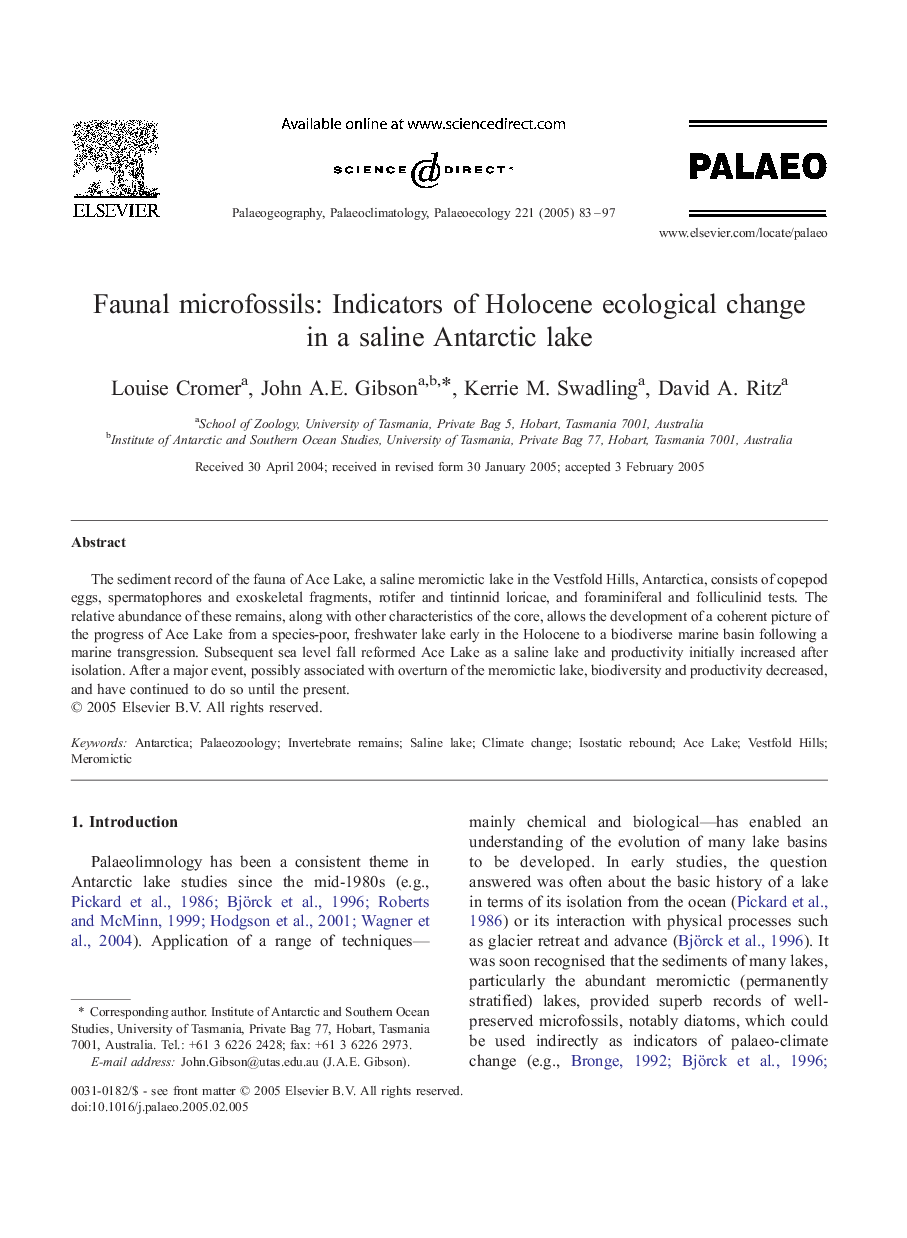| Article ID | Journal | Published Year | Pages | File Type |
|---|---|---|---|---|
| 9463122 | Palaeogeography, Palaeoclimatology, Palaeoecology | 2005 | 15 Pages |
Abstract
The sediment record of the fauna of Ace Lake, a saline meromictic lake in the Vestfold Hills, Antarctica, consists of copepod eggs, spermatophores and exoskeletal fragments, rotifer and tintinnid loricae, and foraminiferal and folliculinid tests. The relative abundance of these remains, along with other characteristics of the core, allows the development of a coherent picture of the progress of Ace Lake from a species-poor, freshwater lake early in the Holocene to a biodiverse marine basin following a marine transgression. Subsequent sea level fall reformed Ace Lake as a saline lake and productivity initially increased after isolation. After a major event, possibly associated with overturn of the meromictic lake, biodiversity and productivity decreased, and have continued to do so until the present.
Related Topics
Physical Sciences and Engineering
Earth and Planetary Sciences
Earth-Surface Processes
Authors
Louise Cromer, John A.E. Gibson, Kerrie M. Swadling, David A. Ritz,
